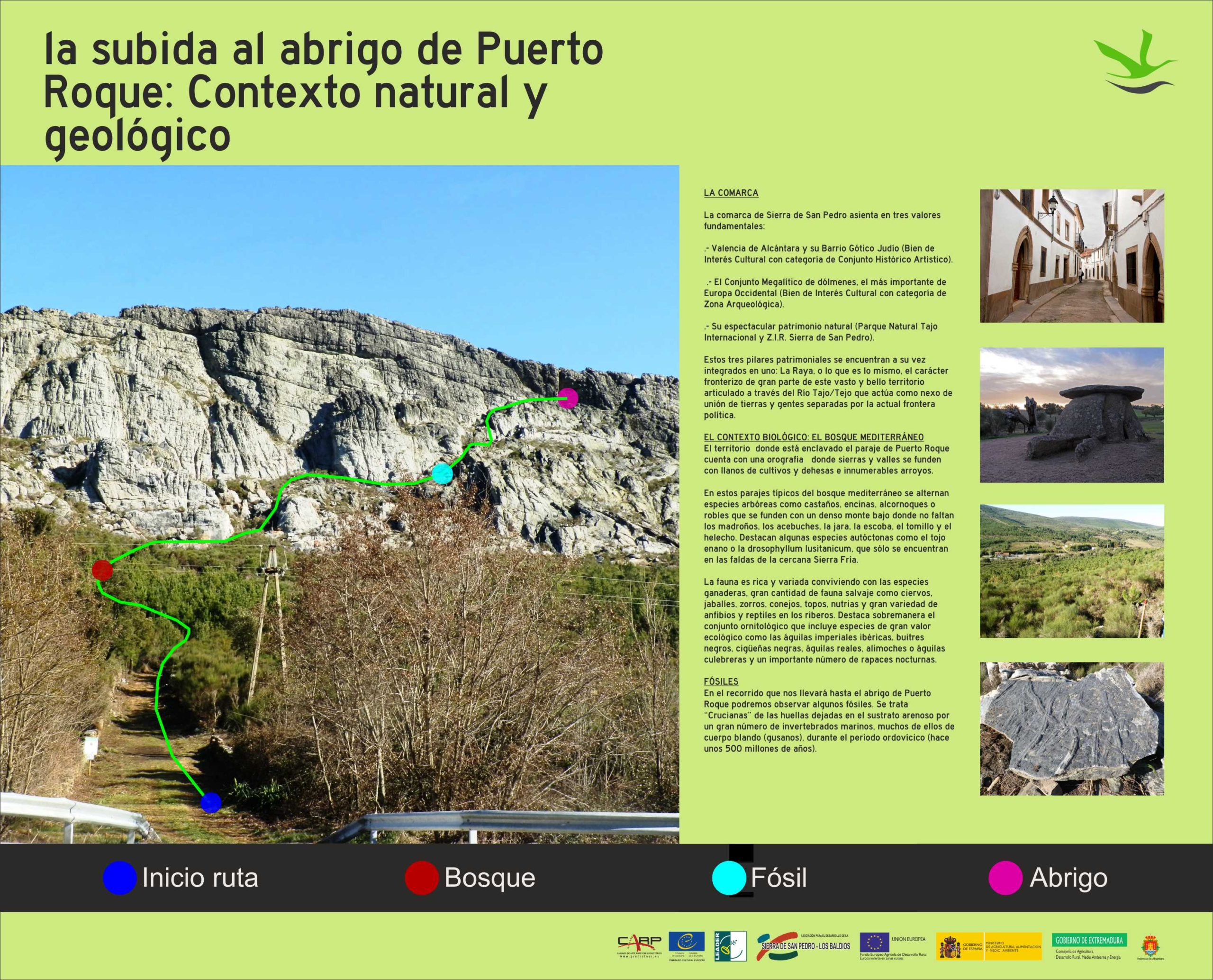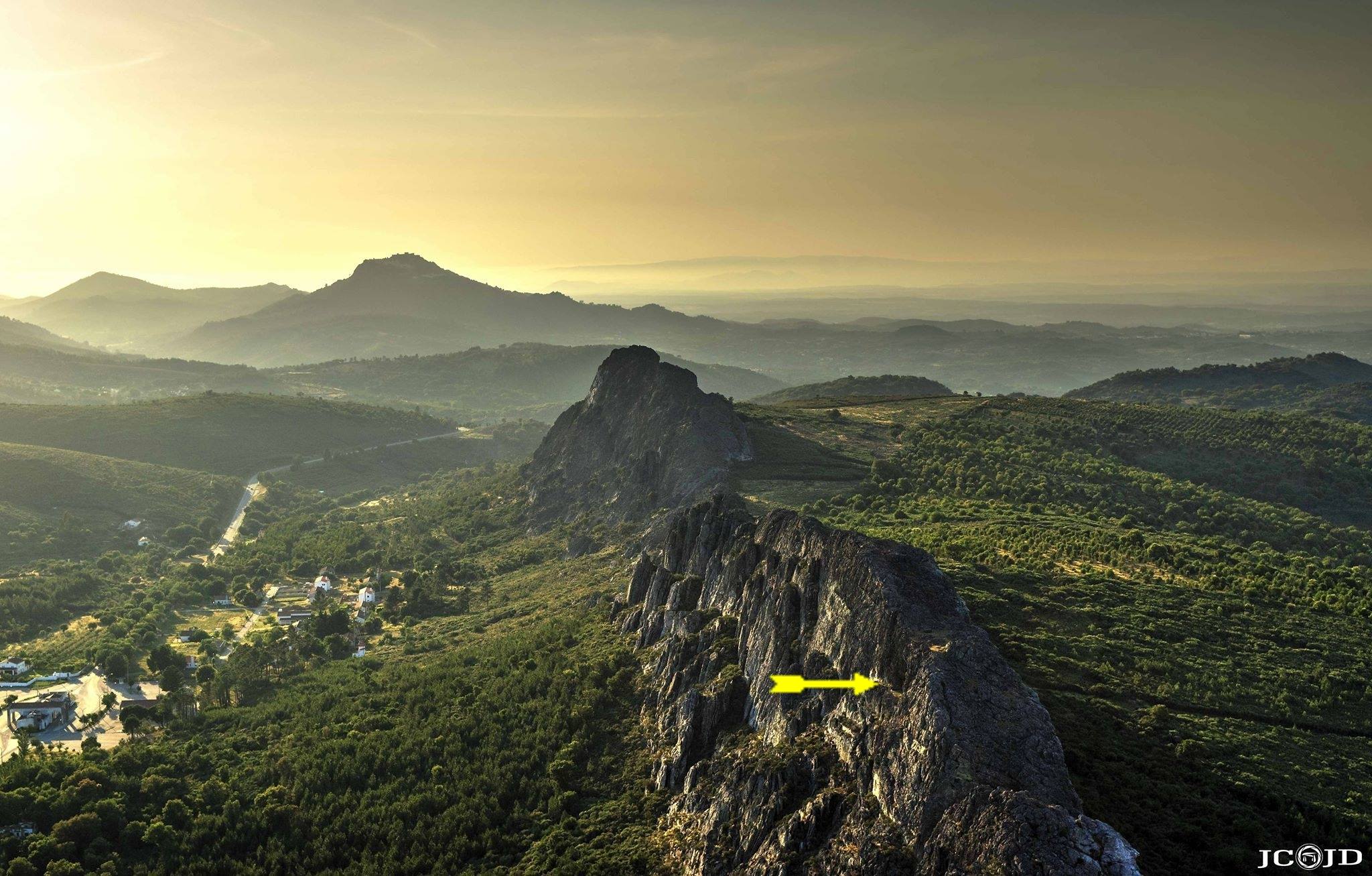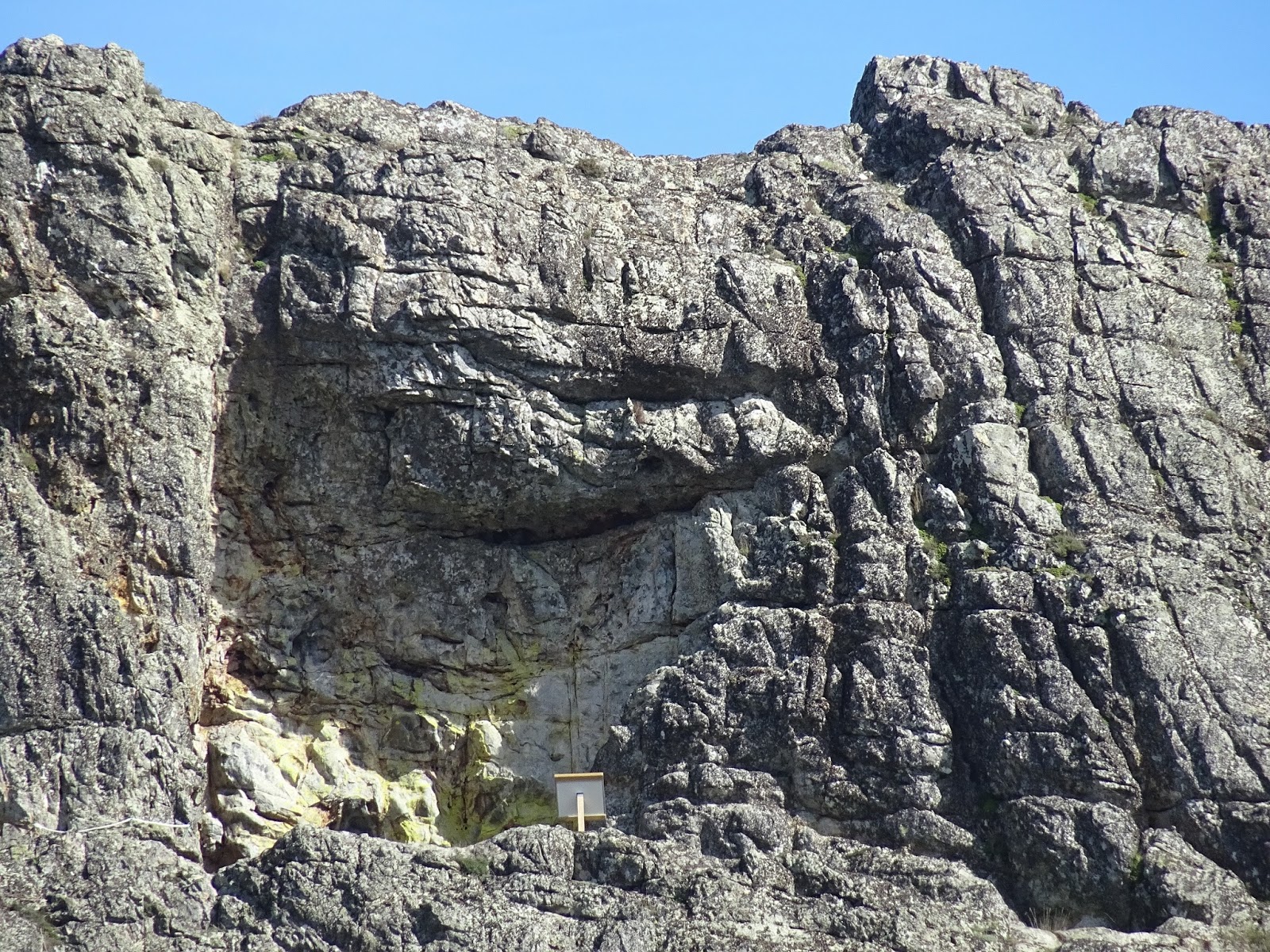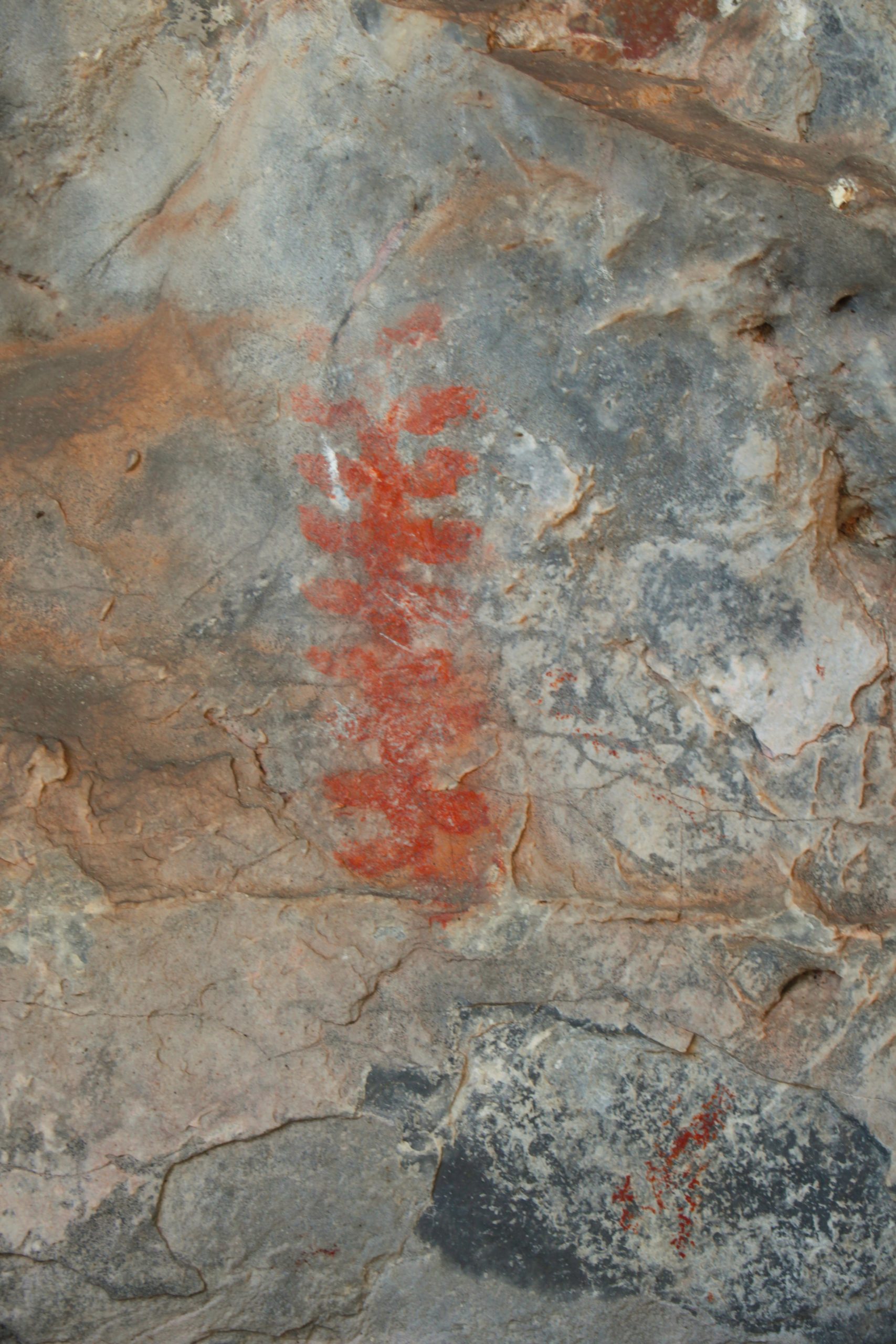Type de site:
Rock-Shelters
Lieu de location: Peñas de Puerto San Roque
Ville: Valencia de Alcántara
Commune: Valencia de Alcántara (Cáceres)
Région: Extremadura
Pays: Espagne
Site Web: https://www.escapadastajointernacional.com/pinturas-rupestres-puerto-roque/
Environnement naturel:
The territory where Puerto Roque is located has an orography where mountains and valleys merge with crop fields and pastures and countless streams. In these typical places of the Mediterranean forest, tree species such as chestnuts, holm oaks, cork oaks and oaks alternate with a dense undergrowth where there is no lack of strawberry trees, wild olive trees, rockrose, brooms, thyme and fern. Some autochthonous species stand out, such as the dwarf gorse or the drosophyllum lusitanicum, which are only found on the slopes of the nearby Sierra Fria. The fauna is rich and varied, living together with the cattle species, a great amount of wild fauna like deer, wild boars, foxes, rabbits, moles, otters and a great variety of amphibians and reptiles in the riversides. The ornithological group is very important and includes species of great ecological value such as the Iberian imperial eagles, black vultures, black storks, golden eagles, Egyptian vultures or short-toed eagles and an important number of nocturnal birds of prey.
Eléments archéologiques du site:
The region of Sierra de San Pedro is based on three fundamental values: Valencia de Alcántara and its Jewish Gothic quarter (a cultural asset with the category of historical-artistic site), the megalithic set of dolmens, the most important in Western Europe (a cultural asset with the category of archaeological area) and its spectacular natural heritage (Tajo Internacional Natural Park and Sierra de San Pedro z.i.r.). These three pillars of heritage are in turn integrated into one: the ray, the border character of much of this vast and beautiful territory articulated through the Tagus/Tejo River that acts as a nexus of land and people separated by the current political border.and stylistic variations over 3000 years, during the Copper and Bronze Ages to make way, already with the arrival of the first millennium before Christ, to the rock art of the Iron Age.












